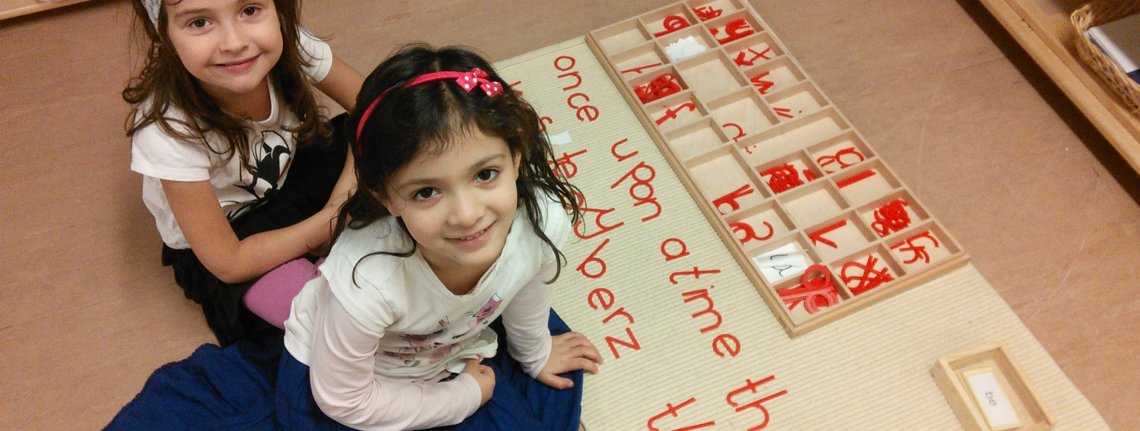
MONTESSORI MYTHS
Although the Montessori method has been getting increased media coverage recently, there are still a lot of untruths that fly around and we frequently get asked the same questions when people find out we are Montessori teachers. We thought it would be of interest to debunk some of these myths.
1. Montessori classrooms are a chaotic free for all
To an untrained eye, during a visit to a Montessori classroom it could seem as if all the children are moving around randomly, all doing different activities to one another. But if you were to stay and watch for a while, you will hopefully see that all children are doing purposeful work that is appropriate to their level of learning. They are free to choose whatever is interesting to them, allowing their concentration, independence and coordination to develop. As teachers, we guide them in making appropriate choices. If you would like to visit Casa Montessori to observe the classroom, please drop us an email.
2. Montessori classrooms are too structured
This oft thought fact is the polar opposite to myth number 1, showing how misinformed people can be. A structured classroom could not be further from the truth as the children are free to move around the room, choosing work from any area of learning. They are free to work with a piece of material for as long as they like, or as little. They can also choose when to stop and have a snack and they are also free to take a book and have some quiet time in the book corner if they wish. Unlike in mainstream schools, there are no artificial time restraints; no bell rings to signal ‘snack time.’
3. Montessori is just for gifted children
Maybe it is because Montessori educated children can seem more advanced for their age but people often think that Montessori is just for gifted children. This could not be further from the truth and the first children that Maria Montessori taught were actually those with learning difficulties. Montessori schools cater to every individual child across all levels of the learning spectrum. We are proud to have a wide range of nationalities and children from different backgrounds at Casa Montessori.
4. Montessori will not prepare my child for ‘normal’ school
Surprisingly we often get asked whether a child who has been educated in a Montessori school will be able to adapt to a mainstream school at reception age. We do not teach children to write their name, parrot fashion. Instead, through materials that prepare children indirectly for writing, they soon discover they have the ability to write and of course, more often than not, the first word they want to write is their name. We do not teach them anything just for the sake of it, but instead we aim to encourage and nurture an inherent love of learning. All of the children that leave Casa Montessori to go to either independent or state schools at reception age have got on very well; parents have often remarked that they seem more prepared than classmates from mainstream nurseries.
5. Children work alone at tables, there’s no social interaction
It is true that children do work alone occasionally. But there are so many materials that lend themselves to collaboration and teamwork. There is social interaction through the older children helping to teach the younger ones and the way the younger children learn from their elders. A great deal of emphasis is placed on the social development of the children, and respect for their peers and the environment. They learn how to replace the materials so they are ready for a friend to use and they wash up together after a snack. At Casa Montessori, all the children eat lunch together, and the older children take turns in setting the table. Should a child spill some beans, the rush and hubbub of children all keen to help their friend tidy up is a testament to the social awareness and desire to help that is inherent in the children.
6. Montessori teachers don’t teach, they just stand around watching
It may seem that way to a casual onlooker but the Montessori teachers spend a lot of time preparing the environment, ensuring it stimulates the child. Children are given a presentation of each material and the teachers then stand back to let them use it independently. The beauty of so many Montessori materials is that they are autodidactic, so the children can be left alone to teach themselves, by doing. The Montessori student is not an empty vessel, which the teacher fills with knowledge, but an active participant in their own learning journey. The Montessori teacher spends a great deal of time observing the child, so they know what next to present to them and what further materials may be needed to fulfil the child’s needs. Montessori teachers also spend time with groups of children, demonstrating grace and courtesies; how to behave in a socially acceptable way.
We hope this has helped answer some questions. If you have any others, or would like more information or clarification on anything mentioned here, please get in touch. We are here to help and welcome questions from current and prospective parents alike.
Casa dei Bambini Montessori School

